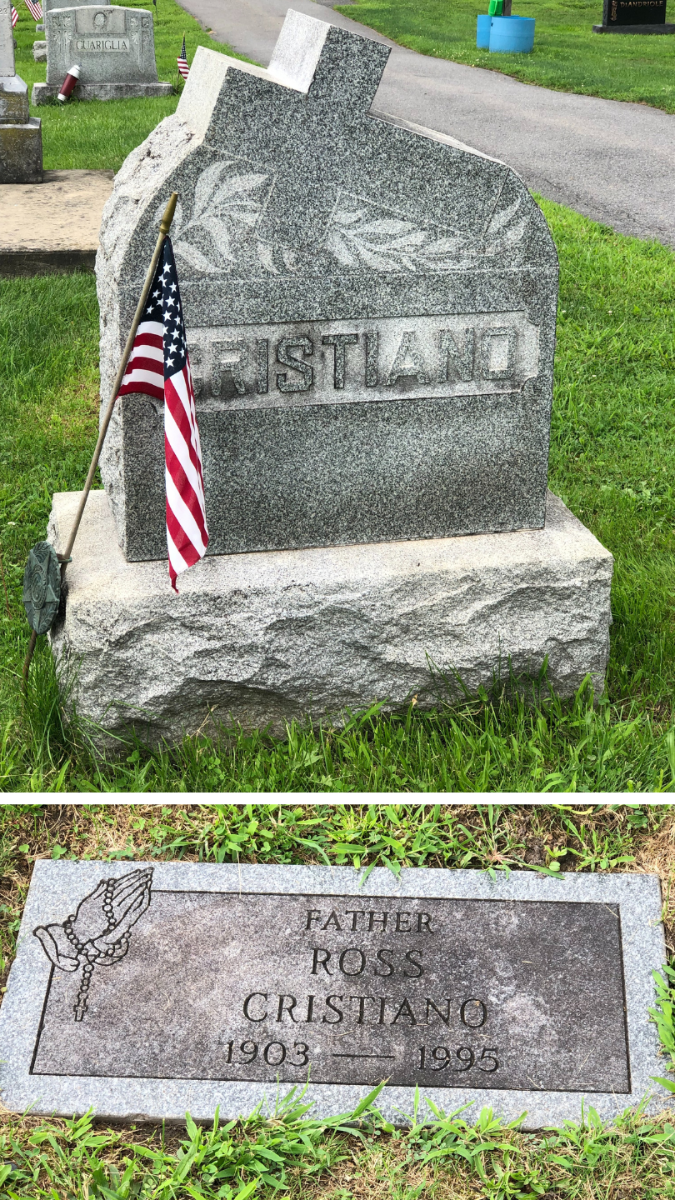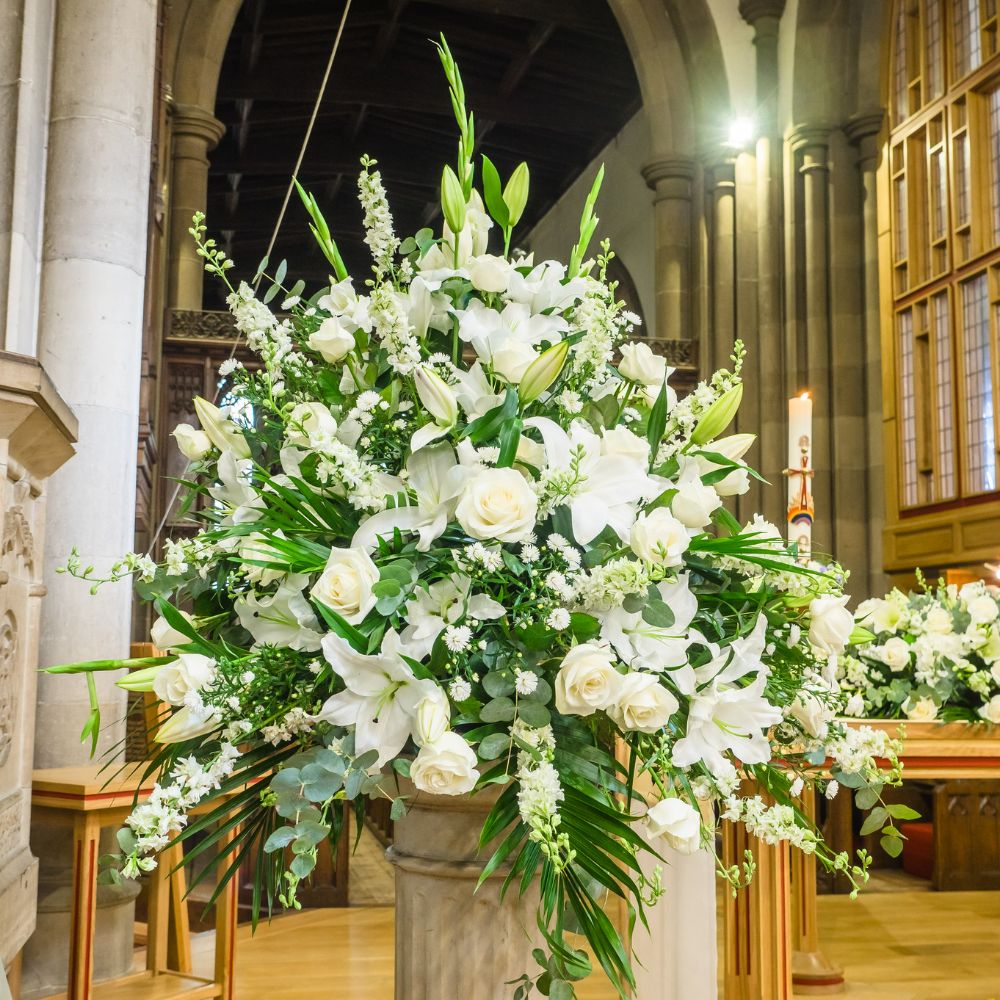All Articles & Guides / Cemetery / A Guide to Gravestone Symbolism
A Guide to Gravestone Symbolism
Cemeteries and graveyards are places most of us will visit at some point in our lives. They're places to say goodbye, pay respects, and visit loved ones who are no longer with us. If you really pay attention when you walk through a cemetery, you'll notice many stones have intricate artwork in addition to names and dates, but what does it all mean? Sometimes, they are just art without significance, but often, the carvings communicate something about the person they memorialize. To help you make sense of it, we've put together this guide to gravestone symbolism.
Symbols on Gravestones in North America
In North America, except for some on the east coast, most of our cemeteries date back less than three hundred years. That means the artwork typically represents somewhat modern ideals, as opposed to more ancient symbols that may be found in Europe. The most common symbols on headstones we see here are symbolic of faith, personal qualities, organizational memberships, and occupations.
Symbols of Faith
Whether Christian, Jewish, or other religious observers, many spiritual people want signs of their belief system associated with their grave. Crosses and Stars of David are obvious symbols of faith that you may find in a cemetery, but there are others that are more subtle. Here's a list of some of the ones you'll see most often:
- Crosses usually symbolize Christianity because followers of Jesus Christ believe he died for their sins and opened the gates of heaven for them. Crosses may be upright, sideways, or tilted. However, a sideways cross may also signify that the deceased person was from Denmark because that is the country's national emblem.
- The Star of David represents the Jewish faith. The six-pointed star signifies the belief that God watches over his people from all six directions: north, south, east, west, up, and down. The resulting hexagram in the middle is symbolic of their spiritual dimension.
- The crescent moon with a star is an unofficial yet popular symbol for the Islamic faith.
- The menorah is a Messianic symbol of faith.
- The pentagram is often used by those who practice Wicca.
- A beehive can symbolize a member of the Church of Jesus Christ of Latter-Day Saints or membership in an organization called the Independent Order of Odd Fellows.
- A ship's steering wheel as a religious sign represents the Buddhist Wheel of Righteousness, but it may also show that the deceased loved life at sea.
- An anchor is an older symbol of Christianity from the religion's early days when they were persecuted, but it may also signify the person lived a life at sea.
- Angels typically show the person held spiritual beliefs. Angels pointing up mean the person went to heaven. A praying angel is praying for the soul of the deceased. A flying angel may symbolize rebirth. A weeping angel may show the grave of a child or someone who suffered an untimely death.
- A cherub is another common symbol on the grave of a child.
- A harp signifies praises to God.
- Flame represents the belief in eternal life.
- Gates signify the gates of heaven being open to the deceased.
- A crown means the person achieved admittance to heaven.
- A cardinal is a symbol used by Catholics to represent the blood of Christ and the fire and vitality of the living spirit.
- The dove symbolizes the holy spirit, the hope of resurrection, or the person's soul being at peace.
- A shamrock or clover can show Irish descent or it may refer to the Holy Trinity of Christianity (God, Jesus, and the Holy Spirit).
- A lamb is a Christian symbol for Jesus and may signify the tomb of an infant or young child.
- Hands in prayer represent a person's piety.

Symbols of a Person's Character
In addition to their religious beliefs, loved ones may want to incorporate representations of how the person behaved in life. Some symbolism that fits into this category is very modern, but more often, you'll find Victorian grave symbolism to be quite popular.
- An acorn signifies prosperity, strength, power, and independence. To help with this analogy, you might want to think of an oak dropping thousands of acorns in the fall, each of which may grow into a strong tree.
- A basket may signify fertility or a maternal bond.
- A column represents the person's life. Unbroken, means they had a full, long life, but if it's broken, it shows their life was cut short. An unbroken column may also show the person was the head of the household or a pillar of the community.
- An empty bench symbolizes mourning or contemplation.
- A clock signifies the passage of time. If it shows a specific time, it could be the moment of the person's death.
- An evergreen symbolizes faithfulness.
- A heart may mean a blissful soul if the dates on the stone are from the Colonial era. Otherwise, it's a symbol of romantic love from the Victorian period.
- Ivy or vines symbolize friendship, fidelity, and immortality.
- The lily represents innocence, purity, and humility.
- An oak leaf shows strength, stability, and endurance.
- A rose represents love, virtue, beauty, and motherhood.
- Shoes that are empty, or if one is turned over on top of another, symbolize the death of a young child.
- A sickle is a symbol of death or the last harvest.
- A skull is another symbol of death or the mortal remains of a person



Organizational Membership Symbolism and Abbreviations
If a person was an active member of a prominent organization or secret society, it might be highlighted on their gravestone. From the famous but secretive Masons to the Shriners, the fraternal organizations that play an important role in their members' lives deserve recognition in death.
- AAONMS stands for the Ancient Arabic Order of Nobles and the Mystic Shrine, also known as Shriners International. Their symbols are a sword, a crescent moon, and a star, usually depicted together.
- AASR means the Ancient and Accepted Scottish Rite, commonly known as the Masons. The most widely recognized symbol for this group is the square with a set of compasses.
- The Order of the Eastern Star is associated with the Masons and is made up of mostly women. Their symbol is a star with a pentagon inside it.
- BPOE is short for Benevolent and Protective Order of Elks. If you see an elk on a gravestone, the person was likely a member of this organization.
- K of C stands for the Knights of Columbus, which is a Catholic men's organization. Their symbol is a shield mounted upon a Formée cross.
Grave Symbolism Representing Occupations
What you do for a living is usually a reflection of your values, and many people define their lives by their livelihoods. So, it makes sense for symbols that represent common occupations to make their way onto headstones. Here are some popular symbols and their associated jobs.
- An anvil and hammer means the person was a blacksmith.
- A church shows the person was a minister or pastor.
- Corn and wheat both symbolize farming.
- An anchor or a sextant shows the person was a mariner or in the Navy.
- A drum – this symbol was spotted on a recent trip to a local cemetery. The man buried in the grave was a drummer in a local band.
There's no way to cover all the possible meanings of symbols on headstones, especially as new generations get creative with their imagery, but we hope this guide helps you interpret cemetery symbolism on your next trip to visit those who are now resting in peace.
Related Content





